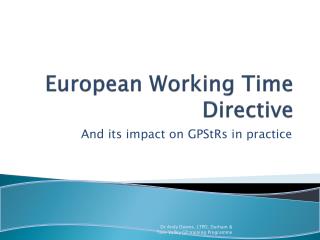

An argument for a maximum working week is that it enables more leisure time and reduces work-related stress. In July 2017, Unemployment in France was 9.7% – so the economy is still suffering relatively high unemployment.If productivity does rise to match the hour cut, there will be no need to employ more workers. The other logic of a maximum working week is that an employer will maintain the same wage – despite lower hours therefore, to afford this increase in real pay, there is an incentive to increase productivity – set higher output targets so the firm can get the same output from fewer workers.In practice, firms find it difficult to exactly replace a worker who knows the job well. However, this assumes that the firm will be able to hire equally skilled and suitable workers.A firm will find it more cost-effective to employ a new worker than pay overtime.

The logic is that if a firm cuts the hours of workers, there will be a necessity to increase the number employed to make up for the fewer hours worked by each worker. In 2000, France had an unemployment rate of 12.5%. A motivation for the French law of a 35-hour maximum working week was the hope it would reduce unemployment. Britain currently has an opt-out so employers can ask workers to work more. The European Working Time Directive has a maximum working week of 48 hours. The main plan is to leave the opt-out of the European Working Time Directive and for working hours to be included in legally-binding sectoral agreements, However, it is worth noting this plan did not set a legal limit – but an aspiration to negotiate lower hours without any real pay cut. Additional hours could be worked, but they had to be paid at an overtime rate of +25%.Īt the 2019 Labour Party Conference, the shadow chancellor John McDonnell proposed a maximum working week of 32 hours – within ten years. For example, in 2000 France passed a maximum working week of 35 hours.

A maximum working week is a legal limit on the standard number of hours that can be worked in a week.


 0 kommentar(er)
0 kommentar(er)
